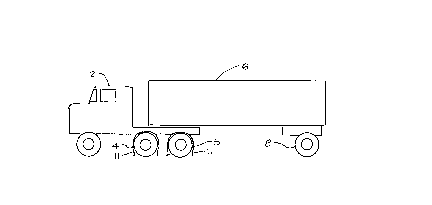Some of the information on this Web page has been provided by external sources. The Government of Canada is not responsible for the accuracy, reliability or currency of the information supplied by external sources. Users wishing to rely upon this information should consult directly with the source of the information. Content provided by external sources is not subject to official languages, privacy and accessibility requirements.
Any discrepancies in the text and image of the Claims and Abstract are due to differing posting times. Text of the Claims and Abstract are posted:
| (12) Patent: | (11) CA 2033216 |
|---|---|
| (54) English Title: | U-SHAPED UNITARY SPRING CLIP AND METHOD FOR INSTALLING TIRE CHAINS |
| (54) French Title: | PINCE A RESSORT UNITAIRE EN U ET METHODE POUR L'INSTALLATION DE CHAINES D'ADHERENCE. |
| Status: | Expired and beyond the Period of Reversal |
| (51) International Patent Classification (IPC): |
|
|---|---|
| (72) Inventors : |
|
| (73) Owners : |
|
| (71) Applicants : | |
| (74) Agent: | OYEN WIGGS GREEN & MUTALA LLP |
| (74) Associate agent: | |
| (45) Issued: | 1997-08-12 |
| (22) Filed Date: | 1990-12-27 |
| (41) Open to Public Inspection: | 1992-06-28 |
| Examination requested: | 1992-06-05 |
| Availability of licence: | Yes |
| Dedicated to the Public: | N/A |
| (25) Language of filing: | English |
| Patent Cooperation Treaty (PCT): | No |
|---|
| (30) Application Priority Data: | None |
|---|
The present invention relates to a tool for
mounting tire chains upon large tires by means of a shaped
resilient steel bar. The device comprises a U-shaped steel
bar with a base and arms with inward curvatures from about
the mid-point of each of the arms of the device and extend-
ing to the ends of said arms. The arms are formed so as to
avoid marking or cutting into the soft sidewall sections of
the pneumatic tires upon which the device might be in-
stalled. One end of a tire chain's hooks are inserted at
the outer corners and upon the tool which is removably
mounted upon the tire or dual-wheeled tire configurations
frictionally grasping the outer sidewalls of said tire or
tires and the chain.
Méthode et appareil pour l'installation de chaînes à neige sur de gros pneus. La présente invention a trait à un outil pour l'installation de chaînes d'adhérence sur de gros pneus au moyen d'une barre résiliente en acier profilé. Le dispositif comprend une barre d'acier en U avec une base et des branches courbées vers l'intérieur environ à partir de leur milieu jusqu'à leurs extrémités. Les branches sont faites de façon à ne pas marquer ni couper les flancs des pneus sur lesquels le dispositif peut être installé. Une extrémité des crochets d'une chaîne d'adhérence est insérée aux coins extérieurs et sur l'outil qui s'adapte de façon amovible au pneu ou aux pneus jumelés en retenant la chaîne par adhérence aux flancs du pneu ou des pneus.
Note: Claims are shown in the official language in which they were submitted.
Note: Descriptions are shown in the official language in which they were submitted.

2024-08-01:As part of the Next Generation Patents (NGP) transition, the Canadian Patents Database (CPD) now contains a more detailed Event History, which replicates the Event Log of our new back-office solution.
Please note that "Inactive:" events refers to events no longer in use in our new back-office solution.
For a clearer understanding of the status of the application/patent presented on this page, the site Disclaimer , as well as the definitions for Patent , Event History , Maintenance Fee and Payment History should be consulted.
| Description | Date |
|---|---|
| Time Limit for Reversal Expired | 2001-12-27 |
| Letter Sent | 2000-12-27 |
| Inactive: Final fee received | 1997-09-05 |
| Grant by Issuance | 1997-08-12 |
| Inactive: IPC assigned | 1997-07-21 |
| Inactive: First IPC assigned | 1997-07-21 |
| Inactive: IPC removed | 1997-07-21 |
| Inactive: Application prosecuted on TS as of Log entry date | 1997-06-10 |
| Inactive: Status info is complete as of Log entry date | 1997-06-10 |
| Pre-grant | 1997-04-11 |
| Notice of Allowance is Issued | 1997-01-21 |
| Application Published (Open to Public Inspection) | 1992-06-28 |
| All Requirements for Examination Determined Compliant | 1992-06-05 |
| Request for Examination Requirements Determined Compliant | 1992-06-05 |
There is no abandonment history.
| Fee Type | Anniversary Year | Due Date | Paid Date |
|---|---|---|---|
| Final fee - small | 1997-04-11 | ||
| MF (patent, 7th anniv.) - small | 1997-12-29 | 1997-12-29 | |
| MF (patent, 8th anniv.) - small | 1998-12-29 | 1998-12-07 | |
| MF (patent, 9th anniv.) - small | 1999-12-27 | 1999-11-22 |
Note: Records showing the ownership history in alphabetical order.
| Current Owners on Record |
|---|
| JOSEPH DESCHENES |
| Past Owners on Record |
|---|
| None |